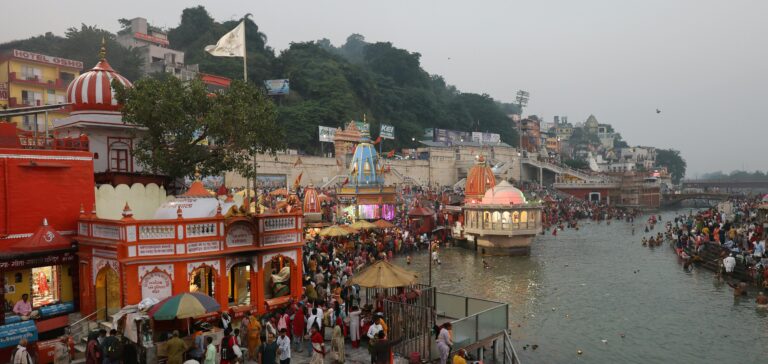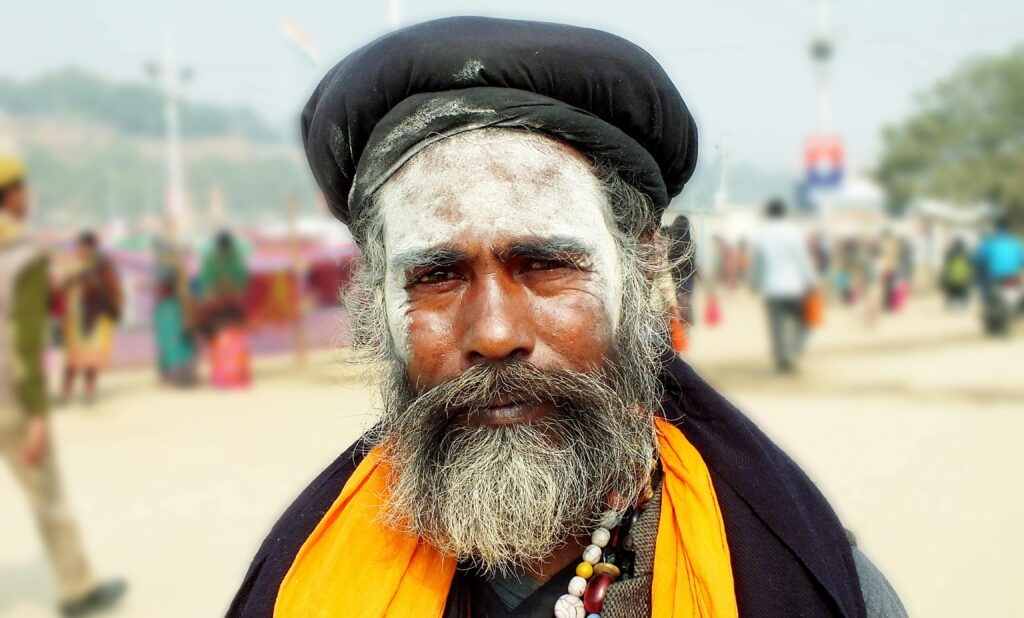
Kumbh Mela
कुंभ मेला – विश्व का सबसे बड़ा धार्मिक आयोजन
परिचय
कुंभ मेला, जिसे विश्व का सबसे बड़ा धार्मिक आयोजन माना जाता है, आस्था, संस्कृति और परंपरा का अद्भुत संगम है। करोड़ों श्रद्धालु, साधु-संत और आध्यात्मिक साधक इस महान आयोजन में भाग लेते हैं। यह मेला भारतीय सांस्कृतिक धरोहर का प्रतीक है और इसे देखने के लिए विश्वभर से लोग आते हैं।
कुंभ मेले का इतिहास और उत्पत्ति
कुंभ मेले की उत्पत्ति भारतीय पौराणिक कथाओं से जुड़ी हुई है। मान्यता है कि देवताओं और असुरों के बीच अमृत कुंभ (अमरता का अमृत) के लिए हुए संघर्ष में अमृत की कुछ बूंदें हरिद्वार, प्रयागराज, नासिक और उज्जैन में गिरीं। इन स्थानों को पवित्र माना जाता है। इसका पहला ऐतिहासिक उल्लेख 7वीं शताब्दी में चीनी यात्री ह्वेनसांग ने किया था।
कुंभ मेले के स्थान
कुंभ मेला चार पवित्र स्थानों पर आयोजित किया जाता है:
- हरिद्वार: गंगा नदी के तट पर।
- प्रयागराज: त्रिवेणी संगम, जहां गंगा, यमुना और सरस्वती नदियां मिलती हैं।
- नासिक: गोदावरी नदी के तट पर।
- उज्जैन: क्षिप्रा नदी के तट पर।
कुंभ मेले के प्रकार
- पूर्ण कुंभ मेला: 12 वर्षों में एक बार आयोजित होता है।
- अर्ध कुंभ मेला: हर 6 साल में होता है।
- महाकुंभ मेला: यह विशेष मेला हर 144 साल में प्रयागराज में आयोजित होता है।
आध्यात्मिक महत्व
कुंभ मेला केवल एक आयोजन नहीं है, बल्कि यह आत्मा को शुद्ध करने और मोक्ष प्राप्त करने का एक साधन माना जाता है। यहां पवित्र नदियों में स्नान करना पापों का नाश करता है। श्रद्धालु साधु-संतों से आशीर्वाद लेते हैं और प्रवचन में भाग लेते हैं।
खगोलीय महत्व
कुंभ मेले की तिथियां ग्रहों की स्थिति के आधार पर तय की जाती हैं। जब बृहस्पति कुंभ राशि में प्रवेश करता है और सूर्य मेष राशि में होता है, तब मेले का आयोजन किया जाता है। यह खगोलीय स्थिति मेले के आध्यात्मिक महत्व को बढ़ाती है।
कुंभ मेले की प्रमुख आकर्षण
- पवित्र स्नान: सबसे महत्वपूर्ण अनुष्ठान, जो शुभ मुहूर्त पर किया जाता है।
- साधु-संतों की शोभायात्रा: नागा साधुओं और विभिन्न अखाड़ों का भव्य प्रदर्शन।
- सांस्कृतिक कार्यक्रम: नृत्य, संगीत, और कला प्रदर्शन।
आयोजन और प्रबंधन
कुंभ मेले का आयोजन एक विशाल कार्य है। स्थानीय प्रशासन और सरकार बड़े स्तर पर बुनियादी ढांचे का निर्माण करती है। सफाई, चिकित्सा सुविधा और सुरक्षा के पुख्ता इंतजाम किए जाते हैं। हजारों स्वयंसेवक मेले को सफल बनाने में योगदान करते हैं।
वैश्विक मान्यता
2017 में कुंभ मेले को यूनेस्को की अमूर्त सांस्कृतिक धरोहर सूची में शामिल किया गया। यह आयोजन अंतरराष्ट्रीय स्तर पर प्रशंसा प्राप्त करता है और लाखों विदेशी पर्यटकों को आकर्षित करता है।
चुनौतियां
कुंभ मेले के दौरान कई चुनौतियां आती हैं:
- भीड़ प्रबंधन: लाखों लोगों की सुरक्षा सुनिश्चित करना।
- पर्यावरणीय प्रभाव: नदियों की स्वच्छता बनाए रखना और कचरे का प्रबंधन।
आगंतुकों के लिए सुझाव
- भीड़ से बचने के लिए कम व्यस्त दिनों में जाएं।
- पानी, आरामदायक कपड़े, और पहचान पत्र साथ रखें।
- धार्मिक नियमों और मर्यादाओं का सम्मान करें।
कुंभ मेले का प्रभाव
कुंभ मेला न केवल धार्मिक महत्व रखता है, बल्कि यह स्थानीय अर्थव्यवस्था को भी बढ़ावा देता है। यह आयोजन भारतीय संस्कृति और परंपराओं को बढ़ावा देता है और राष्ट्रीय एकता को मजबूत करता है।
आज के समय में कुंभ मेले का महत्व
कुंभ मेला केवल आस्था का प्रतीक नहीं है, बल्कि यह भारतीय परंपराओं की ताकत और एकता का संदेश देता है। यह आयोजन हमें हमारी सांस्कृतिक जड़ों से जुड़ने की प्रेरणा देता है।
निष्कर्ष
कुंभ मेला आस्था, संस्कृति और परंपरा का जीवंत उदाहरण है। यह मेला न केवल भारत में बल्कि पूरे विश्व में एक अद्वितीय स्थान रखता है। अगर आप आध्यात्मिक और सांस्कृतिक अनुभव की तलाश में हैं, तो कुंभ मेला आपके लिए एक अविस्मरणीय यात्रा हो सकती है।
FAQs
- कुंभ मेला कब होता है?
कुंभ मेला हर 12 वर्षों में चार स्थानों में से किसी एक पर आयोजित होता है। - कुंभ मेले में पवित्र स्नान का महत्व क्या है?
यह माना जाता है कि पवित्र स्नान से पापों का नाश होता है और मोक्ष की प्राप्ति होती है। - कुंभ मेले में कौन-कौन भाग ले सकता है?
कोई भी व्यक्ति, चाहे वह किसी भी धर्म या देश का हो, इसमें भाग ले सकता है। - कुंभ मेले के दौरान कहां ठहर सकते हैं?
मेले के दौरान तंबू, धर्मशाला और होटल जैसी कई आवास सुविधाएं उपलब्ध होती हैं। - क्या कुंभ मेला पर्यटकों के लिए सुरक्षित है?
हां, सरकार और स्थानीय प्रशासन पर्यटकों की सुरक्षा के लिए सभी आवश्यक कदम उठाते हैं।

Kumbh Mela – The World’s Largest Religious Gathering
Introduction
Kumbh Mela, often described as the world’s largest religious gathering, is a spectacular confluence of faith, culture, and tradition. Millions of pilgrims, sadhus, and spiritual seekers gather at this grand event, which symbolizes devotion, purification, and unity. Recognized globally for its scale and significance, Kumbh Mela is a defining element of India’s cultural identity.
History and Origins
The origins of Kumbh Mela trace back to ancient Indian mythology. According to the Puranas, the event symbolizes the celestial battle between gods and demons over the pot of nectar (amrita). During this battle, drops of nectar fell at four locations: Haridwar, Prayagraj, Nashik, and Ujjain, sanctifying these places. Historical records of Kumbh Mela date back to the 7th century when it was mentioned by Chinese traveler Hiuen Tsang.
Locations of Kumbh Mela
The Kumbh Mela alternates between four sacred sites, each hosting the event at specified intervals:
- Haridwar: Along the banks of the holy Ganges River.
- Prayagraj: At the Triveni Sangam, where the Ganges, Yamuna, and Saraswati rivers converge.
- Nashik: On the Godavari River.
- Ujjain: Along the Shipra River.
Types of Kumbh Mela
- Purna Kumbh Mela: Held every 12 years at each of the four locations.
- Ardh Kumbh Mela: Celebrated every 6 years, alternating between Haridwar and Prayagraj.
- Maha Kumbh Mela: A rare event held once every 144 years in Prayagraj.
Spiritual Importance
For Hindus, Kumbh Mela is not just an event but a transformative journey of faith. The central ritual involves taking a holy dip in the sacred rivers, believed to cleanse sins and grant liberation (moksha). Pilgrims also seek blessings from saints and participate in spiritual discourses, kirtans, and meditation sessions.
The Astrological Connection
Kumbh Mela’s dates and locations are determined by planetary alignments. The event occurs when Jupiter enters Aquarius (Kumbha) and the Sun enters Aries. This celestial arrangement is believed to amplify the spiritual energy of the rivers.
Major Attractions
Kumbh Mela is a vibrant celebration that offers a unique blend of spirituality and culture:
- Holy Dips: The most significant ritual, performed at auspicious times.
- Processions: Grand parades featuring naga sadhus, saints, and akharas.
- Cultural Events: Art exhibitions, devotional music, and traditional performances.
Organization and Management
Managing an event of this magnitude is a colossal task. The host city undergoes extensive preparations, including infrastructure development, sanitation facilities, and medical services. Thousands of volunteers and officials work tirelessly to ensure smooth operations and the safety of attendees.
Global Recognition
In 2017, Kumbh Mela was inscribed on UNESCO’s list of Intangible Cultural Heritage. The event attracts international visitors, scholars, and journalists, highlighting its global significance.
Challenges
Despite its grandeur, Kumbh Mela faces challenges:
- Crowd Management: Ensuring safety for millions of people.
- Environmental Impact: Managing waste and protecting the sanctity of the rivers.
Tips for Visitors
If you plan to attend Kumbh Mela, here are some tips:
- Visit during less crowded days for a peaceful experience.
- Carry essentials like water bottles, comfortable clothing, and personal identification.
- Respect the traditions and maintain cleanliness.
Impact of Kumbh Mela
Kumbh Mela significantly boosts the local economy, creating jobs and driving tourism. It also promotes Indian culture, fostering unity and pride among attendees.
Why Kumbh Mela Matters Today
Kumbh Mela is more than a religious event; it is a testament to India’s enduring traditions and collective faith. In an age of individualism, it reminds us of the power of community, devotion, and harmony.
Conclusion
Kumbh Mela is a celebration of spirituality and humanity on an unparalleled scale. Its profound cultural and spiritual significance makes it a unique phenomenon, attracting millions from all walks of life. Whether you’re seeking spiritual growth or a cultural experience, Kumbh Mela offers a journey like no other.
FAQs
- When is the next Kumbh Mela?
The next Kumbh Mela will take place in 2025 at Prayagraj. - How can I participate in Kumbh Mela?
You can visit the designated site during the event and follow the rituals. - Is Kumbh Mela safe for international travelers?
Yes, extensive security and facilities are provided for all attendees. - What should I bring to Kumbh Mela?
Essentials like water bottles, comfortable footwear, and warm clothing. - Are accommodations available at the venue?
Yes, various options, from tents to hotels, cater to visitors’ needs.

